Content syndication is coming out as one of the most effective digital marketing tactics in 2025, where businesses are aiming to make their voices heard and get an optimally high content ROI. With the Digital space getting more and more competitive, content syndication sites provide the marketer with a good means of distributing their valuable content to more channels, reaching new audiences without necessarily having to come up with completely new content.
The significance of content syndication marketing cannot be overestimated in the modern digital ecosystem. Such websites allow companies to reach their brand names exponentially, increase their SEO positions by means of authoritative backlinks, and get quality leads by means of targeted distribution. Organizations of all sizes, from Fortune 500 companies to small start-ups, are using content syndication services to increase their presence on the internet.
We will discuss the most effective content syndication platforms that 2025 has to provide in this detailed guide, including both free content syndication platforms and the high-quality paid ones. Whether you are in search of content syndication services for B2B or some other content distribution digital platforms, this article will assist you in finding the right tools for your content marketing plan.
Also read: AI Tools For Content Writing
What is Content Syndication?
Content syndication refers to the strategic process of publishing or distributing your original content on third-party sites, websites, and networks with the aim of reaching a wider audience. As opposed to the concept of guest posting, where you go out there to produce new material to fit another platform, content syndication is an activity that involves taking your already high-performing material and republishing it on other content syndication sites.
It operates in two main models, namely content republishing platforms, whereby your articles can be posted directly, and content syndication software that will automatically distribute your articles to more than one channel. A good number of the leading content syndication tools provide the two methods to allow marketers the flexibility in their distribution strategy.
The main difference between paid and free syndication models is the major difference. Content syndication platforms that are free usually have organic reach opportunities, with fewer targeting possibilities, whereas paid content syndication platforms allow more sophisticated audience targeting, analytics, and guaranteed placement but require budget allocations.
The Advantages of Content Syndication
Expands Audience Reach
Content syndication marketing enables a business to access the existing audiences on different platforms without necessarily creating such relationships. This is through the use of online content distribution tools that allow companies to reach millions of active users of various demographics and industries instantly.
Boosts SEO and Authority
The judicious application of content syndication services generates worthy backlinks from high authority sites, which enhances your website ranking in search engines greatly. Such digital content distribution platforms usually possess a high domain scope, which returns the link equity to your original content.
Sources Lead Generation and Conversions
B2B content syndication services are particularly effective at generating qualified leads. Syndication sites can be more effective than regular advertisement systems since they can put your content in front of decision-makers who are actively going out to find solutions in your industry.
Grows Brand Recognition and Trust
Publishing on the well-known article syndication and blog syndication platforms will increase the validity of your brand and your company as a thought leader. Such visibility creates confidence among potential customers and partners.
A Marketing Strategy that is cost-effective
In comparison to developing entirely original content per platform, the ROI of content marketing syndication is outstanding, as it enables the utilization of other content resources to the maximum across other channels.
Top 12 Content Syndication Platforms
1. Outbrain
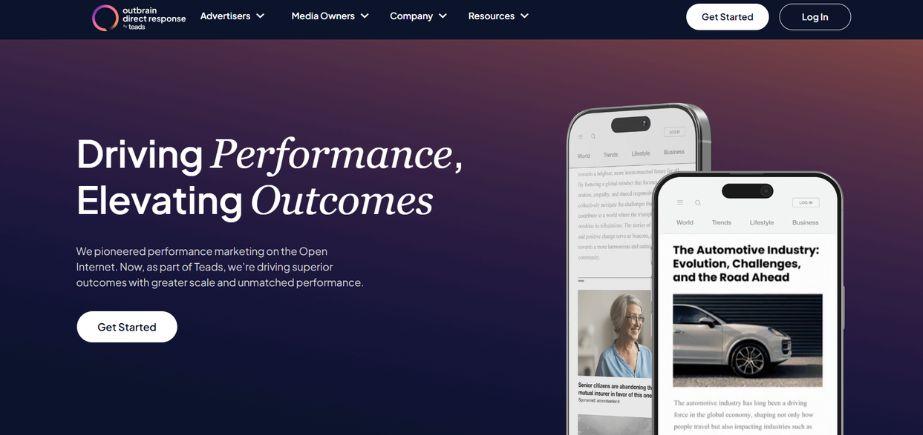
Outbrain is one of the golden content syndication platforms that assist brands in advertising articles, blogs, and videos using native advertising on high-quality publisher sites. It suggests what the users should read as related articles so that the engagement is high. Marketers are now able to target audiences based on their interests, regions, and equipment with the use of powerful targeting tools. Outbrain is especially successful in terms of traffic, lead generation, and brand awareness. It has been in partnerships with leading publishers, which makes it one of the most reliable platforms to be syndicated.
Best Use Case:
Large-scale content marketing campaigns aimed at the greatest number of contacts and interactions.
2. Taboola
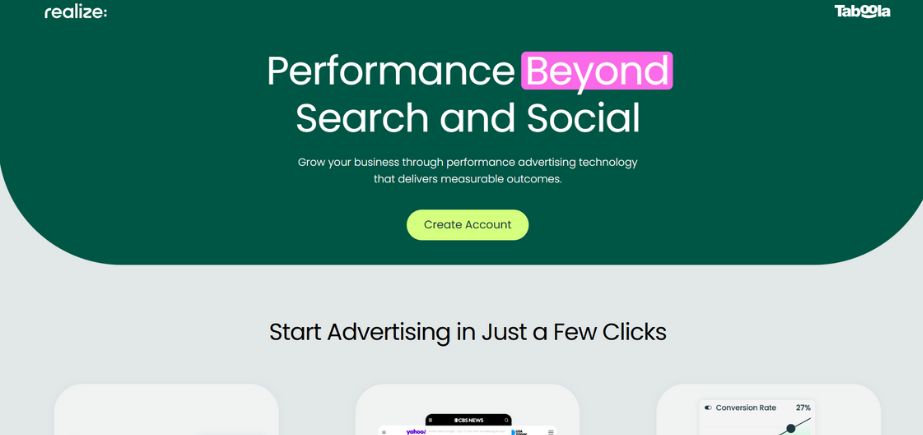
Taboola is a trending content distribution and discovery engine that delivers sponsored content to high-quality websites. Its in-house advertisements are presented as the recommended to you sections, which mix with the editorial stories. Taboola offers highly targeted features, such as the interests of the audience, their behavior, and demographics, which makes the campaigns more efficient. It is common to enhance publicity, create leads, and promote websites. Taboola also has a solid potential to be selected by brands seeking to reach more content across the world since it has access to millions of daily readers.
Best Use Case:
Mid to large-sized companies that specialize in lead generation and brand awareness campaigns.
3. Zemanta
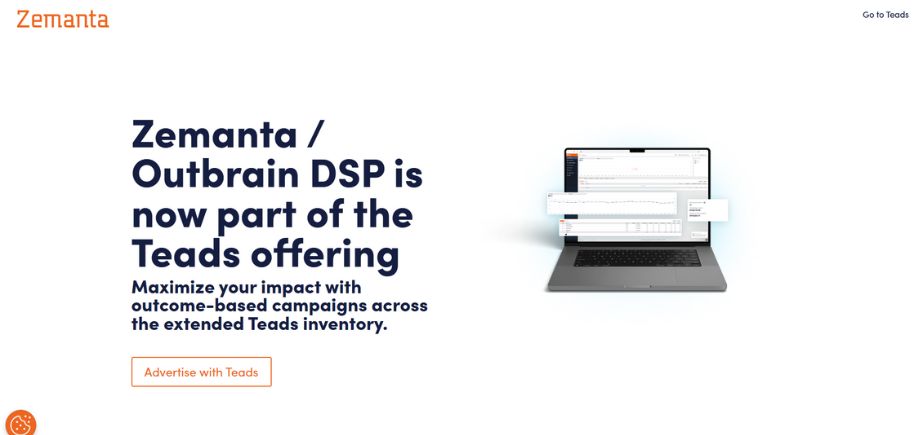
Zemanta is a programmatic content marketing platform that distributes content on a broad network of native advertisements. It enables real-time management of campaigns by marketers and gives detailed analytics and optimization best practices. Zemanta is connected to demand-side platforms (DSPs) to improve precision and efficiency. Companies leverage it to stimulate interaction, convert more, and yield the greatest ROI on their content marketing activities. The company Zemanta is known to be very transparent, enabling the marketer to manage the budgets, audience targeting, and ad placements to be served across various premium publishers.
Best Use Case:
Programmatic Advertising Marketing teams that have programmatic advertising and are looking to have automated content distribution.
4. Medium

Medium is a content syndication platform that is free and is best suited to businesses and creators who would like to republish or share long-form content. It already has an inbuilt reader community and provides high exposure to thought leadership and storytelling content. The medium of cross-posting will not damage the SEO, and it is an effective instrument for a marketer who does not want to be confined. Although it is not as sophisticated in terms of targeting as paid syndication channels, its discovery system, driven by its audience, makes content spread naturally, most notably in professional and niche communities.
Best Use Case:
B2B companies that aim to be an authority in the industry should focus on thought leadership content.
5. LinkedIn Publishing
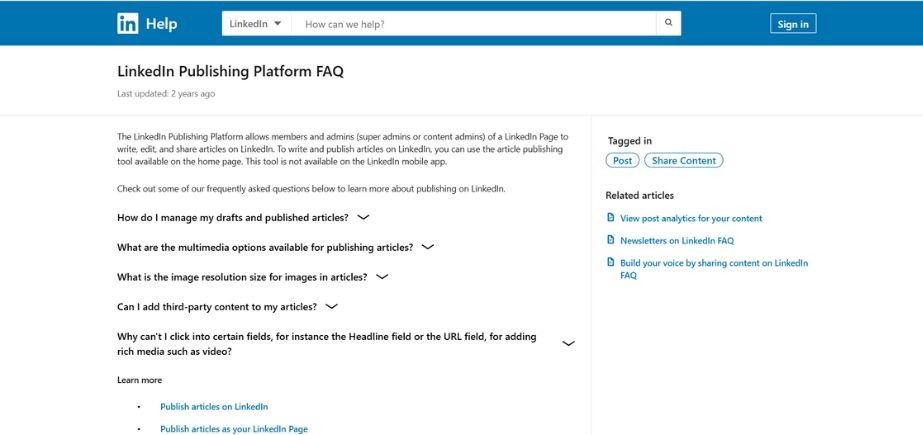
LinkedIn Publishing is an effective tool to republish blogs and insights and establish authority by offering professionals and businesses the chance to post content in B2B content syndication. The articles posted on LinkedIn can be presented to a specific professional audience, which increases the credibility and coverage. It is particularly handy with sophisticated features of targeting industries, job roles, and interests, which makes it useful in lead generation. LinkedIn Publishing also enhances organic exposure as posts are able to go viral in niche networks. It is also an affordable B2B content distribution platform for businesses.
Best Use Case:
Syndication of content to businesses, high-level thought leadership, and industry-focused content.
Also Read: Beginner-Friendly CRM Platforms
6. Quora
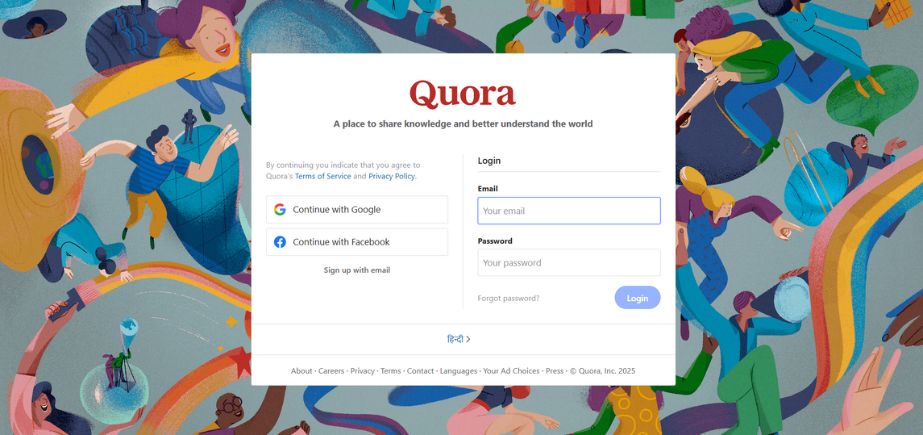
Quora is also a Q&A platform and content syndication tool that offers businesses the option of using blogs as valuable answers. The brands will be able to generate referral traffic, enhance visibility, and become industry leaders by publishing authoritative responses. The Quora Ads can also offer content promotion opportunities, which allow targeting the audience based on their interests and questions with specific accuracy. It is a community-based structure, which guarantees interaction with readers who are active in their search for information. As a marketer, Quora is a cheap yet very useful tool of syndication to create awareness and leads.
Best Use Case:
Instructional materials, articles in the form of frequently asked questions, and technical skill presentations.
7. SlideShare

SlideShare is a presentation sharing site owned by LinkedIn, which allows sharing presentations, infographics, and PDFs. It is particularly useful with B2B marketing, where the business can reuse reports, guides, and webinars and turn them into slide decks to expand their reach. SlideShare possesses a professional following, which makes it perfect for thought leadership and lead generation. It has an SEO friendly configuration that will mean that any content uploaded can be found on Google. For small businesses and start-ups, SlideShare is a cheap method of syndicating content in a professional environment.
Best Use Case:
Presentation of education, reports of research, and graphical summaries of complicated issues.
8. Reddit Ads
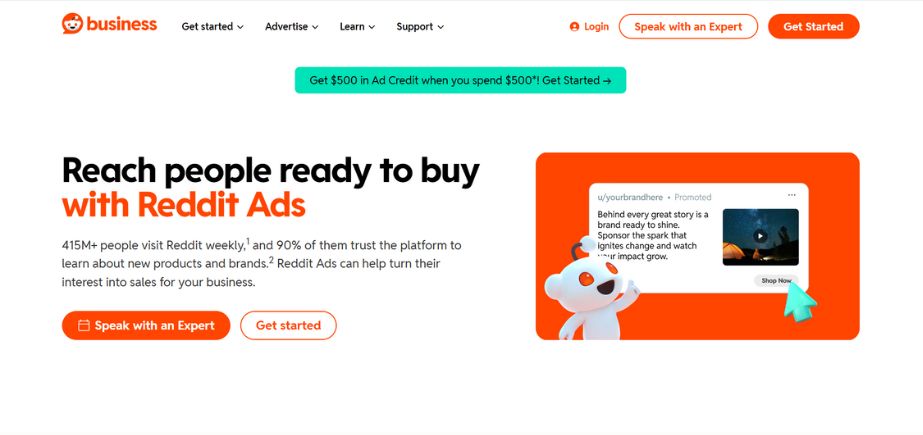
Reddit ads allow content syndication by promoting posts to niche subreddit communities. Having thousands of active forums, businesses will be able to send the content to very specific audiences. Interest-based targeting is very specific with Reddit Ads, making sure that content is delivered to interested readers. The Reddit audience is critical, and at the same time, authentic and relevant content is effective. It helps brands generate leads, create discussions, and create traffic. The platform is Reddit Ads, which is a very good option for syndication when the company is interested in attracting niche or highly active communities online.
Best Use Case:
Niche industry music, a community-based brand, genuine engagement-centered campaigns
9. Content.ad
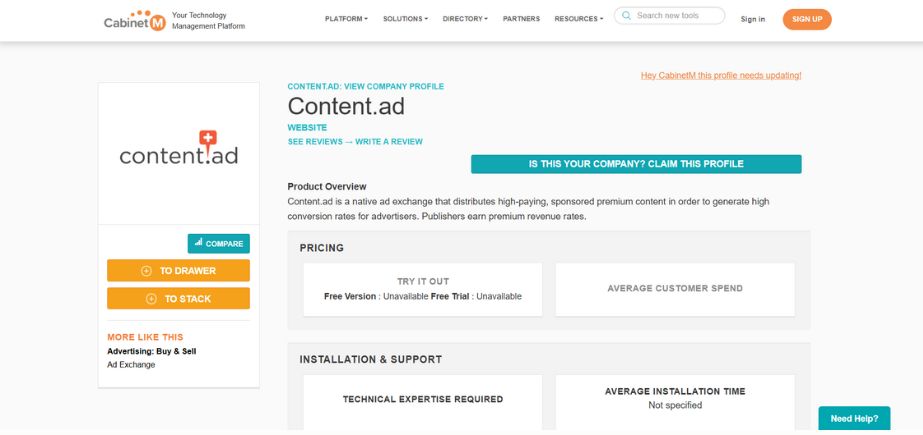
Content.ad is a native ad and content syndication tool that specializes in providing branded content through premium networks of publishers. The widget-based recommendations in its products show related articles, blogs, and videos on reputable sites. The reason why small to mid-sized businesses like Content.ad are popular with Content.ad is because of the low costs of the campaign and high rates of clicking through. It provides live analytics, targeting of audiences, and protection against fraud, which guarantees increased ROI. It helps brands to increase traffic, conversions, and content visibility without creating an intrusive user experience.
Best Use Case:
Small to medium-sized companies that want to use cheap native advertising.
10. Nativo

Nativo is a high-quality content syndication company that deals in native advertising. In contrast, unlike a more traditional placement of ads, Nativo incorporates branded content right into the editorial pages of publishers, and it is also an experience that allows one to read without interruption. It is more about storytelling, which can assist businesses and build more trust in the brand. Nativo also provides sophisticated analytics and audience targeting in order to maximize performance. It is also widely used with agency brands and enterprises that want high-end placements. Nativio increases credibility and reaches greater audience engagement by syndicating content in a natural manner.
Best Use Case:
Brands are enterprises where complex targeting and brand safety restraints are necessary.
11. Scoop.it

Scoop.It is a content curation and syndication that enables firms to republish and distribute articles on various channels. The Scoop. Enables marketers to curate and comment on the content and publish it through their audience, establishing thought leadership. It assists in creating SEO value through growing the number of backlinks and deepening the reach of distribution. Scoop.It is easy to use, and it is compatible with blogs, newsletters, and social media. In the case of startups and SMBs, it is a cheaper way to increase the reach and keep the content marketing regular.
Best Use Case:
The curation of content, exemplification of industry knowledge, and building of a niche audience.
12. Business 2 Community
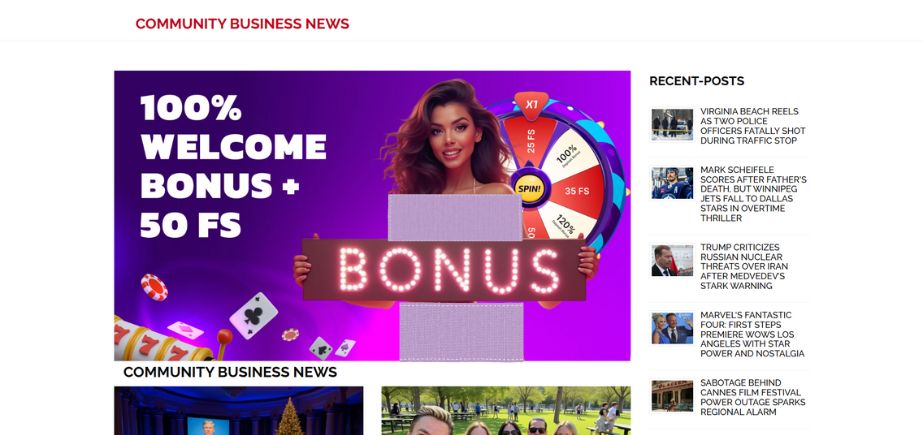
Business 2 Community (B2C) is one of the most prominent articles, blogs, and thought leadership articles syndication platforms. It takes republished posts of companies and increases their visibility to a wide professional audience. B2C artificially syndicated articles enjoy improved search engines and visibility due to the strong domain authority. The platform includes such topics as marketing, finance, technology, and management, which makes it the most appropriate B2B exposure. B2C is an influential opportunity in terms of credibility and broader readership in businesses that are interested in such a partnership.
Best Use Case:
Business-to-business marketing information, industry information, and professional development issues.
Best Practices for a Successful Content Syndication
Selecting the Appropriate Platform in Your Industry
Different online content distribution tools serve different audiences and content types. LinkedIn Publishing and Business 2 Community should be the priorities of B2B companies, whereas Outbrain and Taboola may give better results to consumer-oriented brands.
Developing Interesting and Reusable Content
Effective content marketing syndication must be based on content that can be effectively used in a variety of formats and platforms. Dwelling on timeless issues, practical points, and images of presentations that hold value in various contexts are among the aspects that should be considered.
Tracking ROI and Analytics
Install detailed tracking of all content syndication services to determine performance. UTM parameters, conversion tracking, and platform-specific analytics can be used to determine the channels that provide optimal results.
Eschewing Problems of Duplicate Content.
In case of article syndication sites, appropriate canonical tags and attribution should be used to prevent a penalty by search engines. Others are automatically done through some content republishing platforms, and others are manually implemented.
What is the Future of Content Syndication in 2025 and Beyond
Artificial Intelligence-Based Content Distribution
Top content syndication tools are transforming through the use of artificial intelligence and allow the process of precise audience targeting and automatic optimization. Machine learning is now predicting the performance of content and real-time distribution strategy modifications.
Individualized Syndication Strategies
Premier digital content distribution systems are also adding features of customization that offer audience-specific content presentation depending on preferences, device types, and interaction history.
Account-Based Marketing (ABM) Integration
B2B content syndication solutions are also becoming more and more integrated with ABM tools, which enable the targeting of a specific company and its decision-makers with targeted content campaigns.
Also Read: Best Financial Tools
Conclusion
In 2025, the use of content syndication will continue to be one of the most viable approaches to maximizing content ROI and increasing digital reach. The best content syndication platforms 2025 offer unprecedented opportunities for businesses to connect with their target audiences across multiple channels and touchpoints.
Premium models such as Outbrain and Taboola are recommended premium platforms in instances where business organizations are interested in reaching a wide audience and are highly targeted. Firms that focus on organic growth and thought leadership would need to consider the free content syndication tools such as LinkedIn Publishing and Medium. In the meantime, dedicated blog expansion sites and content distribution applications provide niche-focused prospects of selective participation.
Successful content syndication marketing is all about the ability to know your audience, select the right platforms, and also measure performance in all channels to ensure it is successful. Through a careful combination of both free and paid content syndication tools, companies will be able to greatly boost their online marketing performance and at the same time.
FAQs
Which is the most successful free content syndication site?
Medium and LinkedIn Publishing can be regarded as the best free content syndication resources as they provide massive audiences and good SEO advantages. Medium reaches out to millions of readers on different subjects, whereas LinkedIn Publishing reaches professional readers and decision-makers directly.
What is the impact of content syndication on SEO?
High-quality backlinks to authoritative sites, content visibility, and enhanced domain authority could all have a positive effect on SEO because of content syndication. Nevertheless, to prevent the penalty of duplicate content, it is essential to implement the canonical tags in the required way.
Is lead generation good with syndication?
Indeed, lead generation is successful using content syndication, especially in the case of B2B content syndication services. Such engines as Outbrain and Taboola have the power to deliver qualified leads by positioning your content in front of active users in need of relevant solutions.
What are the best industries that will benefit from content syndication?
Content syndication is usually most successful in B2B industries, such as technology, financial, health, and professional services. Nevertheless, consumer brands in learning, lifestyle, and online platforms also perform very well when it comes to the right selection of the platform.
What is the difference between content syndication and guest posting?
Guest posting is when one writes new, original material specially to be published in another site, whereas content syndication is the re-publication or publishing of content in many places. Syndication is maximizing the value of the current assets of content, and guest posting is establishing new relationships and content that is platform-specific.
